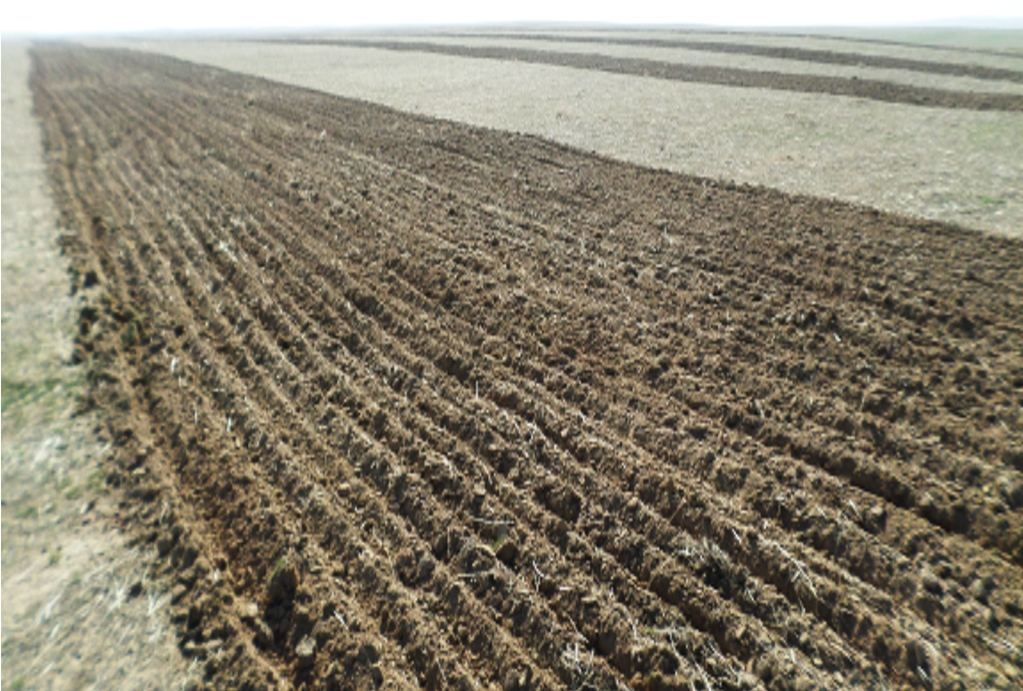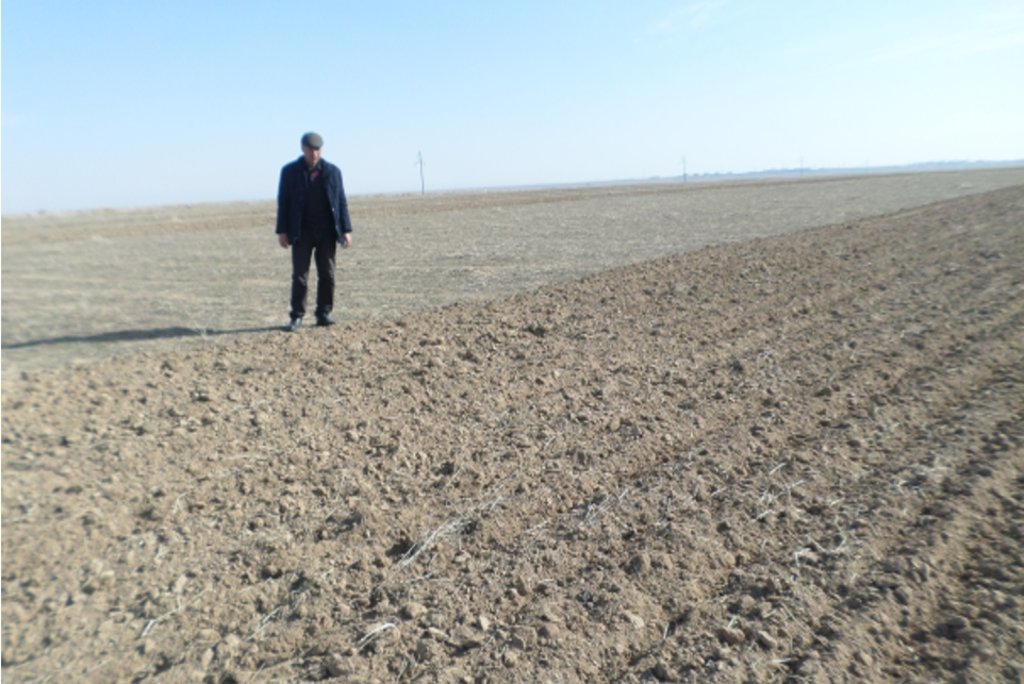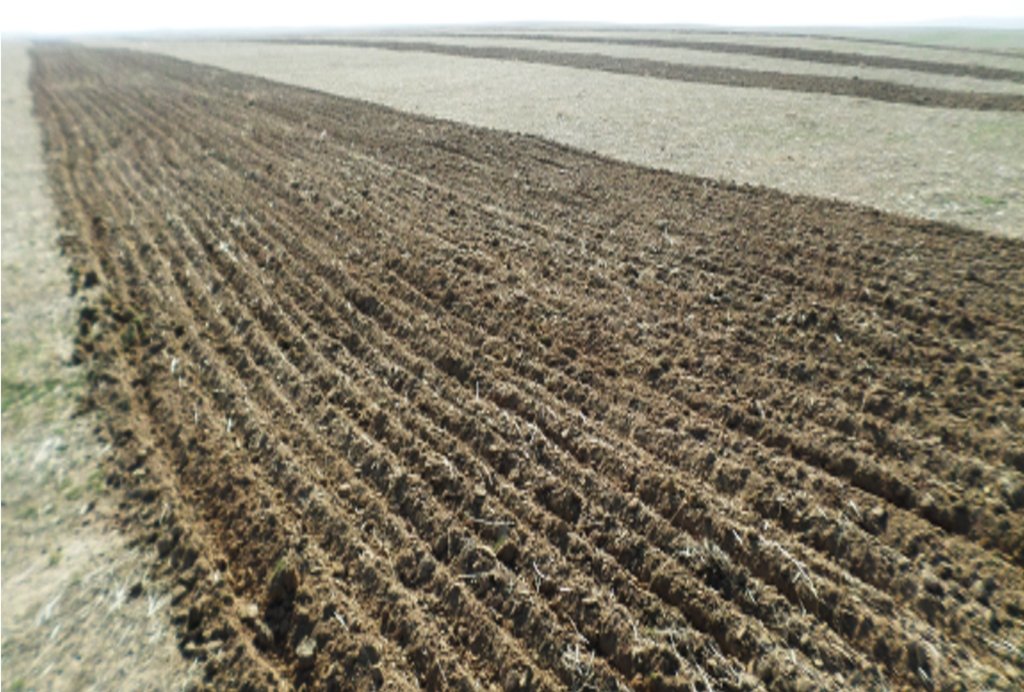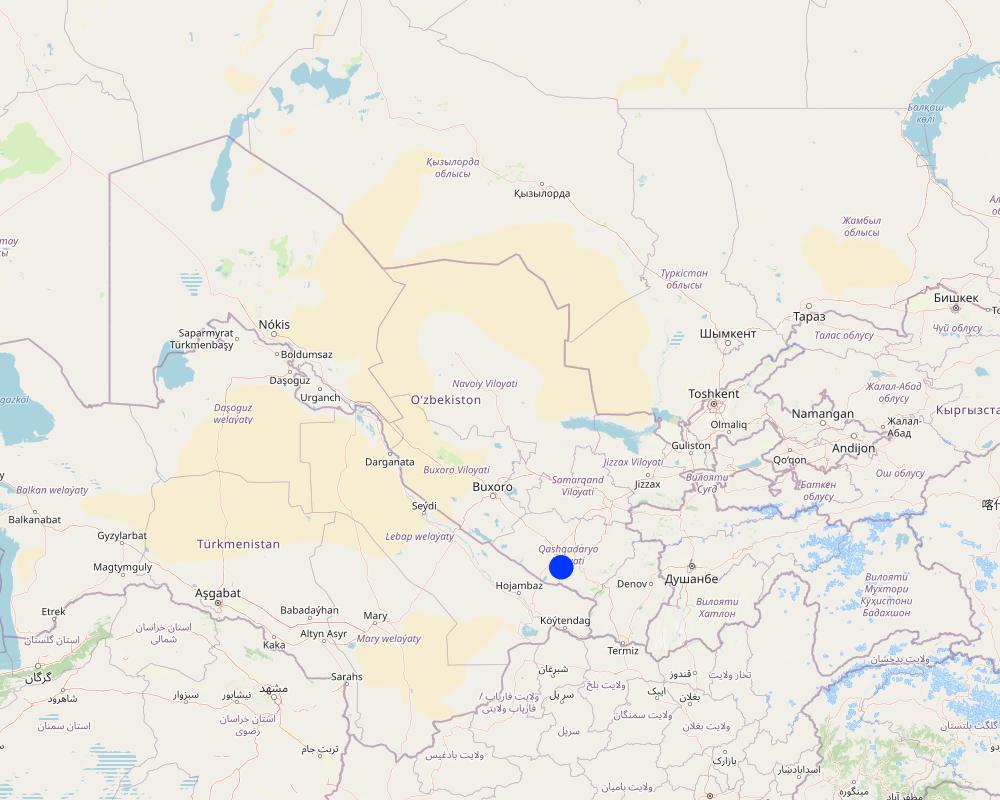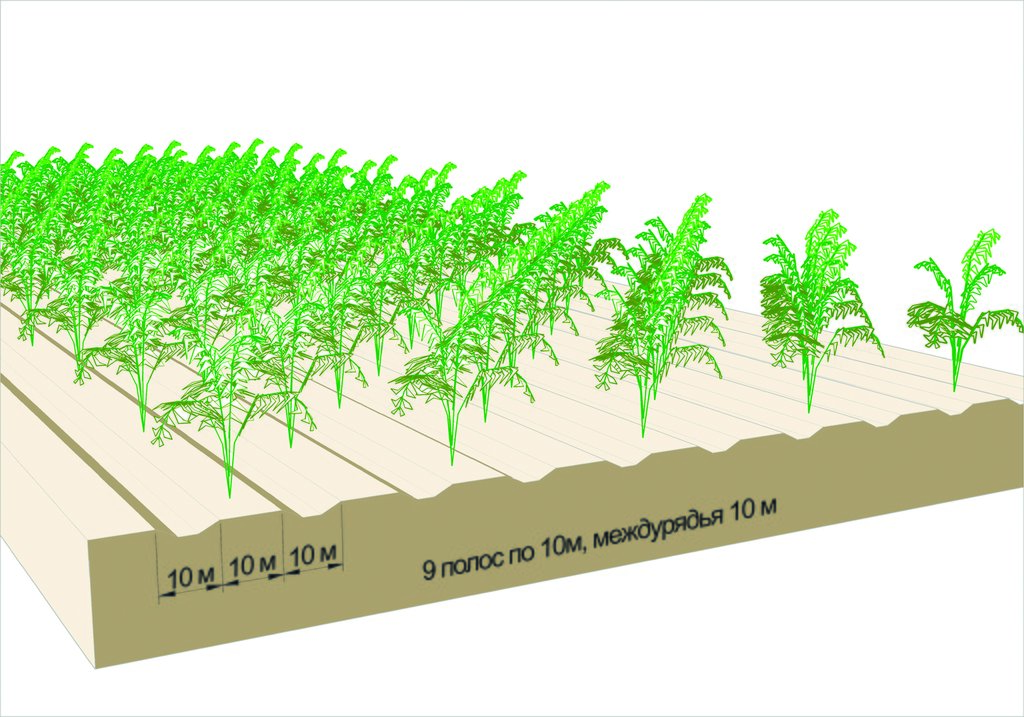Enriching pastures through phytomelioration [Uzbekistan]
- Creation:
- Update:
- Compiler: Rustam Ibragimov
- Editor: Hayot Ibrakhimov
- Reviewers: Rima Mekdaschi Studer, Olga Andreeva
Enriching pastures through phytomelioration
technologies_6190 - Uzbekistan
View sections
Expand all Collapse all1. General information
1.2 Contact details of resource persons and institutions involved in the assessment and documentation of the Technology
Key resource person(s)
land user:
Rustamov Toshkul
Breeding farm "Guzar", massif "Abdukhamid", Samarkand
Uzbekistan
land user:
Holliyorov Kovil
Breeding farm "Guzar", massif "Abdukhamid", Samarkand
Uzbekistan
SLM specialist:
Mukimov Tolib
Uzbekistan
1.3 Conditions regarding the use of data documented through WOCAT
The compiler and key resource person(s) accept the conditions regarding the use of data documented through WOCAT:
Yes
1.4 Declaration on sustainability of the described Technology
Is the Technology described here problematic with regard to land degradation, so that it cannot be declared a sustainable land management technology?
No
Comments:
The technology promotes ecological and phytocoenotic compatibility between natural and cultivated forage plants, enhances biodiversity, and prevents the degradation of pasture vegetation; therefore, it is classified as an environmentally friendly (nature-conserving) technology.
2. Description of the SLM Technology
2.1 Short description of the Technology
Definition of the Technology:
Strip seeding of desert drought-resistant plants on degraded pastures creates an improved and stable structure of pasture phytocoenoses composed of natural and cultivated forage plants, and increases forage potential of desert pastures.
2.2 Detailed description of the Technology
Description:
This technology was developed and adapted by the Samarkand Scientific Research Institute of Karakul Sheep Breeding and Desert Ecology on a 2,100-ha area, with the aim of restoring and improving natural ephemeral–ephemeroid vegetation on degraded pastures. The approach is highly relevant for livestock farms, as more than 80% of Uzbekistan’s pastures are located in desert zones, characterized by a very hot, dry climate and low precipitation. Desert ephemeral vegetation completes its growth cycle within a very short, moist spring period.
In addition to harsh natural conditions, pastures are subject to excessive stocking rates, overgrazing, and the absence of pasture rotation, all of which accelerate degradation. Due to unfavorable natural and climatic factors, disturbed vegetation cover recovers very slowly through natural regeneration. Meanwhile, the growth of livestock production requires increasing pasture productivity to secure adequate forage resources. This technology offers an effective method for natural pasture improvement.
The method involves sowing seeds of various local drought-resistant plant species (such as 'Haloxylon persicum', 'Salsola arbuscula', 'Calligonum' spp., and others) in 10-meter-wide strips alternating with strips of natural pasture of equal width. On the plowed strips, seedlings are planted in furrows spaced 1-m apart, with seeds additionally sown in the same furrows to ensure reliable germination. Over time, shrubs and subshrubs expand into the interstrip areas, while natural vegetation reestablishes on the plowed strips. This results in the formation of a complete agro-phytocoenosis: grasses + subshrubs + shrubs.
The technology is inexpensive - approximately USD 100–150 per ha, and yields positive results within 3–4 years. Farmers can later expand and enrich pastures by distributing seeds without incurring additional costs. The established plantations allow for year-round grazing.
Key stakeholders in pasture phytomelioration include farmers, agricultural clusters, forestry enterprises, rural citizen assemblies, farmers’ associations, agricultural and land management departments and environmental protection agencies.
It is recommended to carry out sowing of desert plants during the wet season (December–February), taking into account weather forecasts. Sowing may be done using seed drills or manually. To improve germination, seeds are mixed with manure and dry sand in a 1:5 ratio. Recommended seeding rates are: 'Halothamnus subaphyllus' – 10–12 kg/ha, 'Calligonum' spp. – 8–10 kg/ha, 'Haloxylon ammodendron' – 6–7 kg/ha.
2.3 Photos of the Technology
2.5 Country/ region/ locations where the Technology has been applied and which are covered by this assessment
Country:
Uzbekistan
Region/ State/ Province:
Kashkadarya region
Further specification of location:
Breeding Farm ‘Guzar’, ‘Abdukhamid’ Area (massif) Kashkadarya region
Specify the spread of the Technology:
- evenly spread over an area
If the Technology is evenly spread over an area, specify area covered (in km2):
0.6
If precise area is not known, indicate approximate area covered:
- 0.1-1 km2
Is/are the technology site(s) located in a permanently protected area?
No
Comments:
The description of the technology is based on materials from the Samarkand Scientific Research Institute of Karakul Sheep Breeding and Desert Ecology, as well as on the results of implementing the technology within the framework of the FAO/GEF project “Integrated Natural Resources Management in Drought-Prone and Salt-Affected Agricultural Production Landscapes in Central Asia and Turkey” (CACILM2).
Map
×2.6 Date of implementation
Indicate year of implementation:
2003
2.7 Introduction of the Technology
Specify how the Technology was introduced:
- during experiments/ research
- through projects/ external interventions
Comments (type of project, etc.):
The technology was introduced in 2003 as part of the activities of the Research Institute of Karakul Sheep Breeding and Desert Ecology. It has been tested by land users relatively recently as a method for increasing pasture productivity and adapting to changing environmental conditions.
The adoption of this technology is supported by donor-funded projects and by the work of the Samarkand Research Institute, carried out under State Committee for Science and Technology programs focused on preventing degradation and restoring pastures.
3. Classification of the SLM Technology
3.1 Main purpose(s) of the Technology
- improve production
- reduce, prevent, restore land degradation
- conserve ecosystem
- preserve/ improve biodiversity
- mitigate climate change and its impacts
3.2 Current land use type(s) where the Technology is applied
Land use mixed within the same land unit:
Yes
Specify mixed land use (crops/ grazing/ trees):
- Agro-silvopastoralism
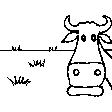
Grazing land
Extensive grazing:
- Semi-nomadic pastoralism
Animal type:
- cattle - dairy
- livestock - other small
Is integrated crop-livestock management practiced?
No
Products and services:
- meat
- milk
- whool
- Karakul
3.3 Has land use changed due to the implementation of the Technology?
Has land use changed due to the implementation of the Technology?
- No (Continue with question 3.4)
3.4 Water supply
Water supply for the land on which the Technology is applied:
- rainfed
Comments:
The sites where the technology is implemented are natural pastures used for livestock grazing and forage harvesting.
3.5 SLM group to which the Technology belongs
- pastoralism and grazing land management
- improved ground/ vegetation cover
3.6 SLM measures comprising the Technology
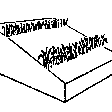
vegetative measures
- V1: Tree and shrub cover
- V2: Grasses and perennial herbaceous plants
3.7 Main types of land degradation addressed by the Technology
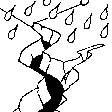
soil erosion by water
- Wt: loss of topsoil/ surface erosion
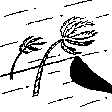
soil erosion by wind
- Et: loss of topsoil
- Ed: deflation and deposition
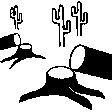
biological degradation
- Bl: loss of soil life
Comments:
Water and wind erosion (deflation), as well as biological degradation, are caused by natural factors (high temperatures and evaporation, soil desiccation, wind activity, and poor vegetative ground cover) and anthropogenic factors (poor management and irrational use of pastures — exceeding the permissible grazing load, overgrazing, lack of rotation, etc.). The combination of these factors creates a cumulative effect, leading to an increase in the proportion of bare/unprotected surfaces, reduced soil resistance to erosion, and ultimately, land degradation.
3.8 Prevention, reduction, or restoration of land degradation
Specify the goal of the Technology with regard to land degradation:
- prevent land degradation
- restore/ rehabilitate severely degraded land
Comments:
Pasture enrichment through phytomelioration — reseeding/planting vegetation in strips — helps reduce degradation and create favorable conditions for the development of natural pasture vegetation, increase the density of plant cover and prevent deflation, enhance soil moisture retention during the growing season, promote seed dispersal, and support further natural vegetation regeneration, among other benefits.
4. Technical specifications, implementation activities, inputs, and costs
4.1 Technical drawing of the Technology
Technical specifications (related to technical drawing):
The degraded pasture area is plowed in 10-m wide strips. Between the plowed strips, 10-meter-wide strips with natural pasture vegetation are left intact. Thus, the enriched pasture area consists of alternating plowed and virgin strips. In the plowed strips, shrub and tree vegetation is planted or sown with seeds. At the “Guzar” breeding farm site, with a total area of 60 ha, 9 strips with a 27-ha area were plowed
Author:
T. Mukimov
Date:
04/01/2021
4.2 General information regarding the calculation of inputs and costs
Specify how costs and inputs were calculated:
- per Technology area
Indicate size and area unit:
60 ha
Specify currency used for cost calculations:
- USD
Indicate average wage cost of hired labour per day:
10
4.3 Establishment activities
| Activity | Timing (season) | |
|---|---|---|
| 1. | Soil preparation: plowing, harrowing, rough leveling. | December – February. |
| 2. | Planting/sowing | Mid December – mid February |
| 3. | Crop maintenance and plant protection. | March - September |
Comments:
Pasture enrichment activities through phytomelioration are carried out during the winter period. Sowing is preferably done in rainy weather, under snow, or in snow.
4.4 Costs and inputs needed for establishment
| Specify input | Unit | Quantity | Costs per Unit | Total costs per input | % of costs borne by land users | |
|---|---|---|---|---|---|---|
| Labour | Labor of workers | ha | 60.0 | 15.0 | 900.0 | |
| Equipment | Preparing the land, sowing | ha | 60.0 | 100.0 | 6000.0 | |
| Plant material | Seeds + manure | ha | 60.0 | 25.0 | 1500.0 | |
| Total costs for establishment of the Technology | 8400.0 | |||||
| Total costs for establishment of the Technology in USD | 8400.0 | |||||
If land user bore less than 100% of costs, indicate who covered the remaining costs:
The costs were covered from the institute/project budget.
4.5 Maintenance/ recurrent activities
| Activity | Timing/ frequency | |
|---|---|---|
| 1. | Control of livestock grazing, prevention of overgrazing | Constantly |
Comments:
To maintain the technology, only management measures are required to prevent pasture degradation due to overloading and to create conditions favorable for regeneration of the natural vegetation. With proper management, the productive lifespan of enriched pastures is 40–60 years.
4.6 Costs and inputs needed for maintenance/ recurrent activities (per year)
Comments:
No additional investments are required to maintain the technology. Management activities aimed at preserving the vegetation cover ensure the longevity of enriched pastures.
4.7 Most important factors affecting the costs
Describe the most determinate factors affecting the costs:
The highest costs of implementing the technology are associated with soil preparation and sowing/planting, which include labor and fuel and lubricants. All expenses are incurred in the first year; in subsequent years, costs are virtually nonexistent.
5. Natural and human environment
5.1 Climate
Annual rainfall
- < 250 mm
- 251-500 mm
- 501-750 mm
- 751-1,000 mm
- 1,001-1,500 mm
- 1,501-2,000 mm
- 2,001-3,000 mm
- 3,001-4,000 mm
- > 4,000 mm
Specify average annual rainfall (if known), in mm:
225.00
Specifications/ comments on rainfall:
90% of precipitation falls between December and May.
Indicate the name of the reference meteorological station considered:
Guzar
Agro-climatic zone
- arid
The growth of pasture grasses ceases in summer due to the lack of rainfall and soil drying. The growing season lasts an average of 70 days.
5.2 Topography
Slopes on average:
- flat (0-2%)
- gentle (3-5%)
- moderate (6-10%)
- rolling (11-15%)
- hilly (16-30%)
- steep (31-60%)
- very steep (>60%)
Landforms:
- plateau/plains
- ridges
- mountain slopes
- hill slopes
- footslopes
- valley floors
Altitudinal zone:
- 0-100 m a.s.l.
- 101-500 m a.s.l.
- 501-1,000 m a.s.l.
- 1,001-1,500 m a.s.l.
- 1,501-2,000 m a.s.l.
- 2,001-2,500 m a.s.l.
- 2,501-3,000 m a.s.l.
- 3,001-4,000 m a.s.l.
- > 4,000 m a.s.l.
Indicate if the Technology is specifically applied in:
- not relevant
Comments and further specifications on topography:
The technology was applied on terrain with gentle and sloping inclines.
5.3 Soils
Soil depth on average:
- very shallow (0-20 cm)
- shallow (21-50 cm)
- moderately deep (51-80 cm)
- deep (81-120 cm)
- very deep (> 120 cm)
Soil texture (topsoil):
- coarse/ light (sandy)
- medium (loamy, silty)
Soil texture (> 20 cm below surface):
- coarse/ light (sandy)
Topsoil organic matter:
- low (<1%)
5.4 Water availability and quality
Ground water table:
5-50 m
Availability of surface water:
poor/ none
Water quality (untreated):
poor drinking water (treatment required)
Water quality refers to:
ground water
Is water salinity a problem?
Yes
Specify:
There are no surface water sources on desert pastures. Saline water from artesian wells and boreholes is used for watering livestock.
Is flooding of the area occurring?
No
Comments and further specifications on water quality and quantity:
Water in surface sources is polluted by drainage discharge from irrigated fields.
5.5 Biodiversity
Species diversity:
- medium
Habitat diversity:
- medium
Comments and further specifications on biodiversity:
In rocky and clay deserts, vegetation includes wormwood, saltworts, and, in some areas, ephemeral grasses. In saline areas, salt-tolerant plants (halophytes) dominate, including various saltwort species, Turgay biyurgun ('Anabasis salsa'), white wormwood, and others. In deserts with loess soils, ephemeral grass communities such as sedge, bluegrass, poppy, and ferula predominate; these dry out with the onset of summer heat. The sparse vegetation cover of sandy deserts consists of psammophytic grasses (such as 'Aristida'), shrub-like juzgun ('Calligonum'), tree and shrub saxaul, and semi-shrub wormwood species.
5.6 Characteristics of land users applying the Technology
Sedentary or nomadic:
- Sedentary
Market orientation of production system:
- mixed (subsistence/ commercial)
Off-farm income:
- > 50% of all income
Relative level of wealth:
- average
Individuals or groups:
- individual/ household
Level of mechanization:
- mechanized/ motorized
Gender:
- men
Age of land users:
- middle-aged
5.7 Average area of land used by land users applying the Technology
- < 0.5 ha
- 0.5-1 ha
- 1-2 ha
- 2-5 ha
- 5-15 ha
- 15-50 ha
- 50-100 ha
- 100-500 ha
- 500-1,000 ha
- 1,000-10,000 ha
- > 10,000 ha
Is this considered small-, medium- or large-scale (referring to local context)?
- medium-scale
Comments:
The average size of farms in irrigated zones is 35–75 ha, while in non-irrigated pasture zones it is 100–200 ha.
5.8 Land ownership, land use rights, and water use rights
Land ownership:
- state
Land use rights:
- leased
- через ассоциации водопользователей и управления ирригационных систем
Are land use rights based on a traditional legal system?
Yes
5.9 Access to services and infrastructure
health:
- poor
- moderate
- good
education:
- poor
- moderate
- good
technical assistance:
- poor
- moderate
- good
employment (e.g. off-farm):
- poor
- moderate
- good
markets:
- poor
- moderate
- good
energy:
- poor
- moderate
- good
roads and transport:
- poor
- moderate
- good
drinking water and sanitation:
- poor
- moderate
- good
financial services:
- poor
- moderate
- good
6. Impacts and concluding statements
6.1 On-site impacts the Technology has shown
Socio-economic impacts
Production
crop production
crop quality
fodder production
Income and costs
farm income
Socio-cultural impacts
food security/ self-sufficiency
Ecological impacts
Water cycle/ runoff
harvesting/ collection of water
Biodiversity: vegetation, animals
Vegetation cover
biomass/ above ground C
plant diversity
animal diversity
Climate and disaster risk reduction
drought impacts
micro-climate
6.2 Off-site impacts the Technology has shown
impact of greenhouse gases
Specify assessment of off-site impacts (measurements):
The technology has only positive effects on the environment, both within and beyond the area of its implementation.
6.3 Exposure and sensitivity of the Technology to gradual climate change and climate-related extremes/ disasters (as perceived by land users)
Gradual climate change
Gradual climate change
| Season | increase or decrease | How does the Technology cope with it? | |
|---|---|---|---|
| annual temperature | increase | moderately | |
| seasonal temperature | winter | increase | moderately |
| seasonal temperature | summer | increase | moderately |
| annual rainfall | decrease | moderately | |
| seasonal rainfall | spring | decrease | moderately |
| seasonal rainfall | summer | decrease | moderately |
Climate-related extremes (disasters)
Climatological disasters
| How does the Technology cope with it? | |
|---|---|
| heatwave | moderately |
| drought | moderately |
Other climate-related consequences
Other climate-related consequences
| How does the Technology cope with it? | |
|---|---|
| extended growing period | very well |
6.4 Cost-benefit analysis
How do the benefits compare with the establishment costs (from land users’ perspective)?
Short-term returns:
slightly positive
Long-term returns:
very positive
How do the benefits compare with the maintenance/ recurrent costs (from land users' perspective)?
Short-term returns:
slightly positive
Long-term returns:
very positive
Comments:
The technology is inexpensive; therefore, the results achieved relative to the investment are modestly positive even in the short term.
6.5 Adoption of the Technology
- 1-10%
Of all those who have adopted the Technology, how many did so spontaneously, i.e. without receiving any material incentives/ payments?
- 0-10%
6.6 Adaptation
Has the Technology been modified recently to adapt to changing conditions?
No
6.7 Strengths/ advantages/ opportunities of the Technology
| Strengths/ advantages/ opportunities in the land user’s view |
|---|
| The technology is simple and inexpensive, and all activities related to land preparation, sowing, and crop maintenance are well known. |
| Local drought-resistant forage plant species are used for pasture enrichment. |
| Strengths/ advantages/ opportunities in the compiler’s or other key resource person’s view |
|---|
| The technology delivers exclusively positive effects, both economic and environmental. |
| Low costs, the absence of any need for further investments to maintain the technology, and its ease of implementation make it attractive for land users. |
| Local plant species are used for phytomelioration, and their seeds are easy to obtain for sowing. |
6.8 Weaknesses/ disadvantages/ risks of the Technology and ways of overcoming them
| Weaknesses/ disadvantages/ risks in the land user’s view | How can they be overcome? |
|---|---|
| The effectiveness of pasture phytomelioration (seed germination and seedling survival) strongly depends on weather conditions. | Plan sowing and planting based on weather forecasts, timing them to coincide with periods of rainfall. |
| Insufficient awareness among farmers and the public about pasture improvement methods. | By conducting training sessions, educational seminars, and establishing demonstration plots. |
| Weaknesses/ disadvantages/ risks in the compiler’s or other key resource person’s view | How can they be overcome? |
|---|---|
| Maintaining the technology requires a high level of management measures to prevent overgrazing and create favorable conditions for vegetation recovery. | Organizational measures are necessary, including the establishment of pasture user committees and other self-governance bodies. |
7. References and links
7.1 Methods/ sources of information
- interviews with SLM specialists/ experts
Three specialists involved in restoring pasture productivity were interviewed
- compilation from reports and other existing documentation
7.2 References to available publications
Title, author, year, ISBN:
Rabbimov A., Mukimov T., Bekchanov B., Boboeva A. Phytomelioration of pastures in Uzbekistan and its necessity in combating desertification and degradation. Current issues of development of productive camel breeding in Kazakhstan. Shymkent, 2014, pp.265-269
Title, author, year, ISBN:
Rabbimov A., Mukimov T. Recommendations for rational use and increasing the productivity of desert pastures. Recommendations, Tashkent, 2012, p. 48
Title, author, year, ISBN:
Rabbimov A., Mukimov T. Intensification of feed production in the desert is the main way to modernize desert-pasture animal husbandry. Chul-yaylov chorvachiligini modernizationlash muammolari. Republic of Ilmiy - Amaliy Conference Sining Materiallari Samarkand, 2012, 308-315 p.
Title, author, year, ISBN:
T.Mukimov. Rangelands and Pasturelands: Problems and Prospects. Chapter 12 Rangelands along the Silk Road: Transformative Adaptation under Climate and Global Change. Editors: Victor Roy Squires, Shang Zhan-Huan and Ali Ariapour (International Dryland Management Consultant, Adelaide, Australia, and others)
Links and modules
Expand all Collapse allLinks
No links
Modules
No modules


